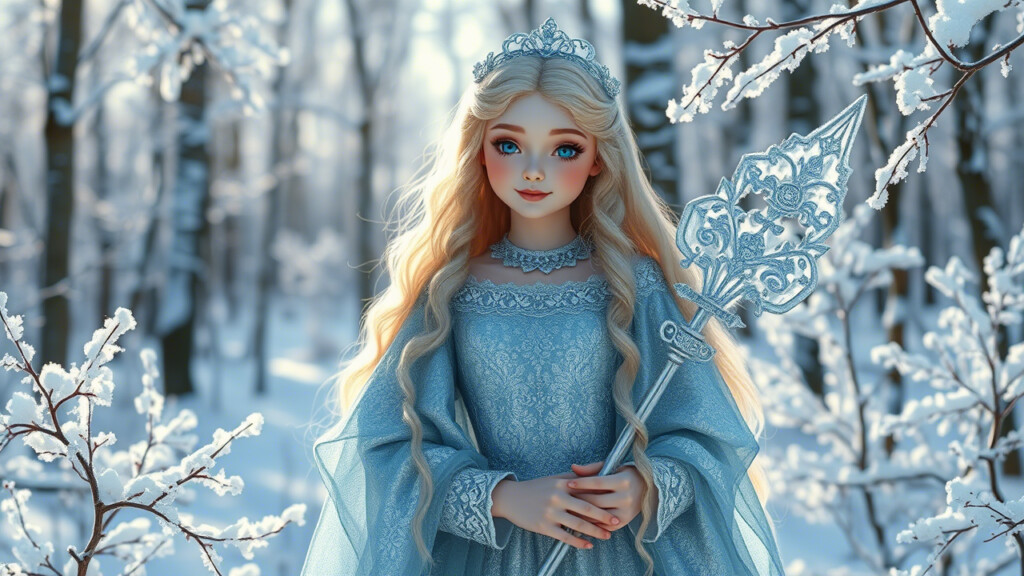Every winter, while the Western world welcomes Santa Claus with his elves and reindeer, in Russia, Ded Moroz (Grandfather Frost) never appears alone. Accompanying him is a beautiful maiden with platinum hair and a white fur coat—Snegurochka, also known as the Snow Maiden.

But few people know that before becoming a festive figure in New Year celebrations in Russia, she was once a tragic character in ancient folklore. The legend of Snegurochka in Russia tells of a snow girl who could not feel love, and when she finally did, that very emotion caused her to melt away.
So how did a sorrowful figure transform into a winter mythological character and a beloved part of Russian holiday traditions? Let’s explore her magical journey!
Snegurochka in Folklore: A Tragic Tale of Snow and Love
In the legend of Snegurochka in Russia, she is the daughter of Moroz (Frost God) and Vesna (Spring Goddess). Born from snow, she possesses an ethereal beauty but is unable to feel love. As she grows older, she longs to experience human emotions. However, the moment she opens her heart, she melts away under the warmth of the spring sun.
This story symbolizes a winter mythological character representing the fleeting beauty of nature—how winter’s charm fades as spring arrives.
Snegurochka and Ded Moroz: From Myth to Holiday Symbol
Originally a tragic figure, Snegurochka was reimagined in Russian literature. In the 19th century, she appeared in Snegurochka, a play by Alexander Ostrovsky, and later in an opera by Nikolai Rimsky-Korsakov. These works helped establish her as a winter mythological character known throughout Russia.
However, the most significant transformation came when Snegurochka became Ded Moroz’s companion. Unlike in the West, where Santa Claus is assisted by elves, the Russians chose the Snow Maiden from folklore as his partner.
Why this difference?
- Ded Moroz has a regal and imposing presence, resembling a winter deity, so he needed a gentler figure to balance him out.
- The image of an old man traveling with his granddaughter aligns with Russian family values.
- Snegurochka and Ded Moroz symbolize the harmony of frost and magic, creating an enchanting holiday atmosphere.
By the 20th century, especially during the Soviet era, this duo became the official representation of New Year celebrations in Russia, appearing in public festivities and television programs.
Snegurochka in Modern Festivities
Today, the Snow Maiden from folklore is no longer associated with tragedy. Instead, she has become a cheerful and beloved symbol of winter.
- She accompanies Ded Moroz in distributing gifts to children.
- She appears in plays and films, often portrayed as kind, intelligent, and full of warmth.
- Modern costumes: While traditionally wearing white, she is now often seen in a beautifully embroidered blue coat.
Nowadays, the legend of Snegurochka in Russia is rarely remembered for its sorrowful origins. Instead, she is cherished as an essential part of New Year celebrations in Russia.
The Revival of a Winter Mythological Character
The journey of Snegurochka and Ded Moroz is a story of transformation: from a tragic snow maiden from folklore to a joyful, magical holiday icon.
Whether as a figure in the legend of Snegurochka in Russia or as a modern holiday symbol, she remains an embodiment of winter magic, reminding us of the beauty and wonder of snowy days. ❄️
